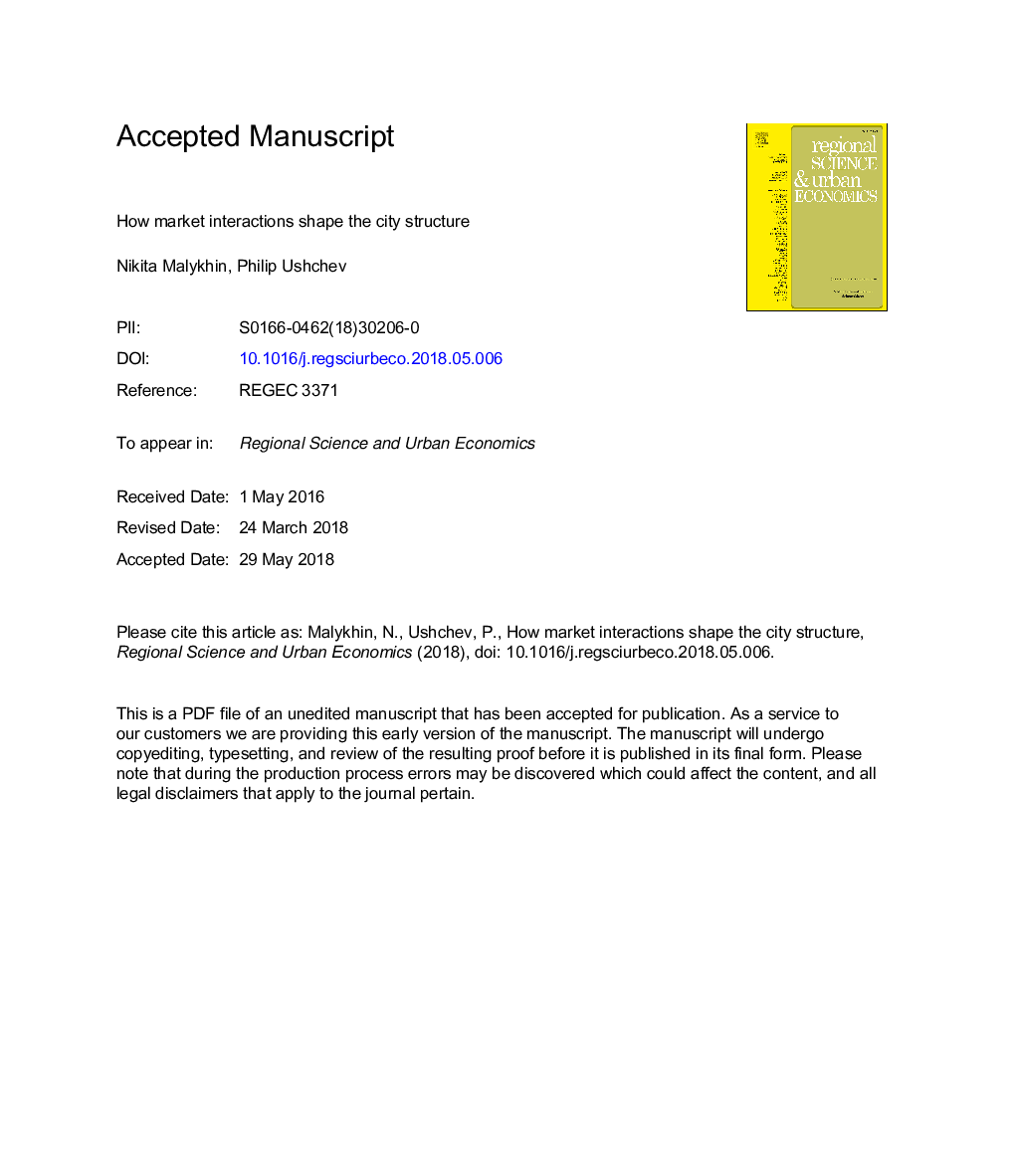| Article ID | Journal | Published Year | Pages | File Type |
|---|---|---|---|---|
| 7383615 | Regional Science and Urban Economics | 2018 | 54 Pages |
Abstract
We develop a spatial monopolistic competition model in which city structure formation is entirely driven by market interactions. When preferences and transport costs are described by real analytic functions, equilibrium land-use patterns are segregated. We completely solve the case of quasilinear quadratic preferences and quadratic transport costs. The city is monocentric when firms are few, duocentric when they are neither too few nor too many, and involves a residential central area bordered by two commercial clusters when firms are many. In the long-run equilibrium, the city size and its spatial structure may change swiftly in response to tiny variations in the opportunity cost of land. Our model captures spatial price dispersion without involving any search frictions.
Related Topics
Social Sciences and Humanities
Economics, Econometrics and Finance
Economics and Econometrics
Authors
Nikita Malykhin, Philip Ushchev,
